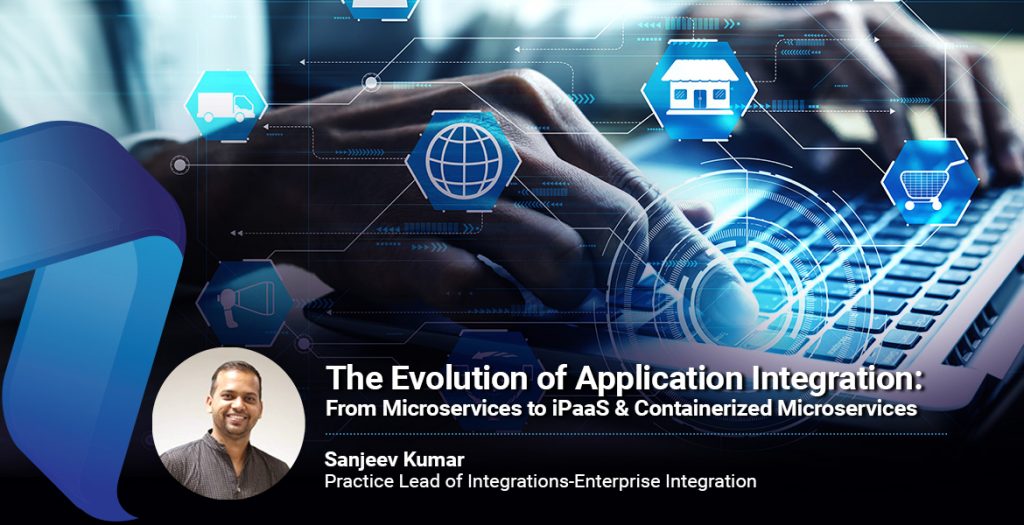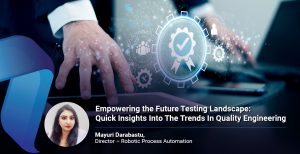Unraveling the Cloud: Application Integration’s Evolutionary Path
In the dynamic landscape of integration, the journey of application integration has undergone significant transformations. This journey has seen the adoption of microservice architectures built using traditional languages such as Java and C#, followed by the embrace of Integration Platform as a Service (iPaaS) solutions, and now, a resurgence in the trend toward containerized microservices deployed on cloud platforms such as Azure and AWS.
The Shift from Traditional to iPaaS Solutions
The transition of traditional application integration built in Java and C# to iPaaS is driven by a multitude of factors, including the need for agility, scalability, and simplified integration processes.
Challenges of Traditional Integration Approaches
While effective in providing connectivity between systems, traditional integration approaches have several limitations, such as:
- complex and time-consuming custom integration solutions
- efficiency scaling struggles
- rigid, tightly-coupled architectures
- operational overhead on IT teams for managing and monitoring.
The Emergence of iPaaS Solutions
In response to these challenges, alternative approach to Application Integration leads to the emergence of iPaaS solutions. iPaaS platforms offer a cloud-based approach to integration, providing pre-built connectors, APIs, and tools to simplify and accelerate the integration process.
As technology continues to evolve, the landscape of Application is poised for further transformation, and organizations are continually seeking innovative ways to optimize their workflows and infrastructure.

“In the quest for seamless integration, the evolution from iPaaS to containerized microservices marks a pivotal shift towards agility, scalability, and innovation, empowering organizations to navigate the complexities of digital transformation with unparalleled efficiency.”
Sanjeev Kumar
Practice Lead of Integrations-Enterprise Integration
Transitioning to Containerized Microservices
One significant shift observed in recent years is the transition from iPaaS to containerized microservices architecture. This transformation is driven by a range of factors such as:
Vendor Lock-in: Organizations relying heavily on iPaaS solutions may find themselves locked into a specific vendor’s ecosystem, limiting their flexibility and autonomy in choosing tools and technologies that best suit their needs.
Scalability Challenges: While iPaaS platforms offer scalability to a certain extent, organizations with high-volume data processing requirements or stringent performance demands may find it challenging to achieve the level of scalability and performance they need.
Customization Constraints: iPaaS platforms typically provide pre-built connectors and workflows for common integration scenarios. However, organizations with unique or highly specialized integration requirements may find it difficult to customize or extend the capabilities of their iPaaS solution to meet their specific needs.
The shift from iPaaS to containerized microservices architecture reflects a broader trend towards greater flexibility, scalability, and control in software development and integration. By embracing containerization technology, organizations can achieve higher levels of agility, performance, and customization in their integration workflows, empowering them to innovate rapidly and stay ahead of the competition in today’s fast-paced digital economy.
Considerations Beyond Application Integration
While iPaaS and containerized microservices each offer unique advantages, the future may see a convergence of these approaches as organizations seek to harness the benefits of both. All the aforementioned points are made assuming that organization is only looking for Application Integration. But what if –
- organization is not only looking for Application Integration but also for B2B / Data Integration?
- organization is also looking for AI and Machine Learning Integration where many iPaaS tools have their own features like MuleSoft recently launching its own RPA?
- organization is not looking for separate API Management services as all iPaaS tools have their own APIM services?
- organization is looking for rapid development and deployment?
Conclusion: Choosing the Right Integration Approach
Ultimately, the choice between iPaaS and containerized microservices depends on factors such as the organization’s integration requirements, technical expertise, and strategic objectives. By carefully evaluating these considerations, organizations can determine the most suitable approach to meet their integration needs and drive business success.






